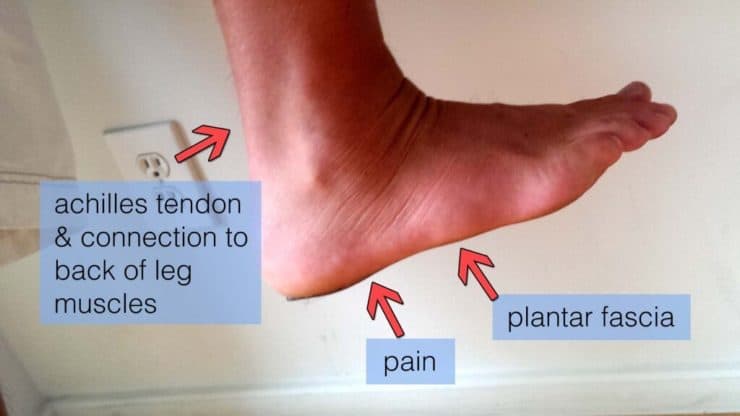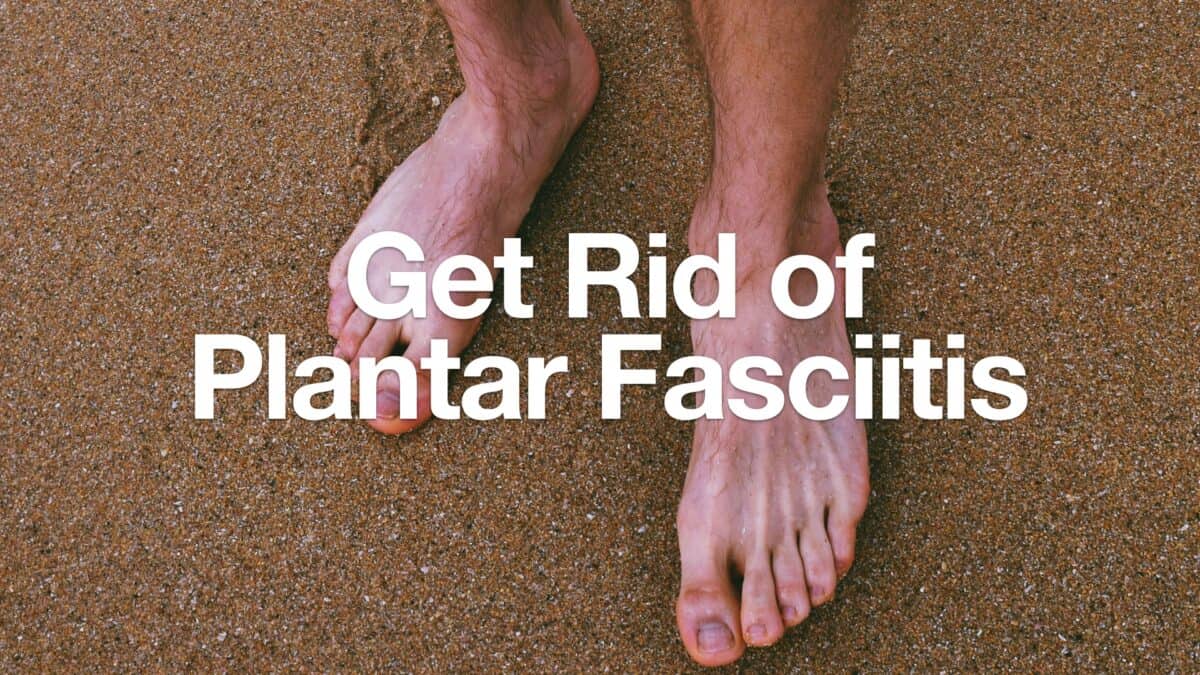
Hiking With Plantar Fasciitis: A Cure
As a hiker, runner, and walker, I have struggled with plantar fasciitis many times over the years. The traditional advice wasn't working for me. And "not walking" for a few months is just not practical in any way.
- Do You Actually Have Plantar Fasciitis?
- What Plantar Fasciitis and How to Treat It
- Hiking With Plantar Fasciitis
- Best Hiking Boots For Plantar Fasciitis
So I went beyond the traditional treatment and wisdom and started exploring alternatives. And the good news is that I finally cured my plantar fasciitis. I haven't had plantar fasciitis in years after following the guidelines in this article. And I'm by no means a medical professional, just a guy who spends a lot of time on my feet. I'm simply sharing my experience in the hopes that it will work for you too.
Is your heel pain a plantar fasciitis symptom?
In general, plantar fasciitis a really intense pain on your heel when you walk, and it’s worse when you first wake up.
These are the typical symptoms that would suggest your heel pain is plantar fasciitis:
- Stabbing pain around your heel / mid-foot
- Bad pain when you first wake up and step down off your bed
- Pain that decreases as the day goes on
Generally you are susceptible if you:
- Have recently switched to minimal running or barefoot running
- Are overweight
- Have been increasing your mileage, strides, and/or pace
- Don’t stretch much
When I first got plantar fasciitis, I thought I had broken my foot, which I’ve also done when running (albeit when I was very overweight). The difference is that when I broke my foot, I experienced a sharp, white-hot pain when my foot came down from a stride. Plantar fasciitis, when you first get it, starts as a subtle pain, if anything. The real kick is about 1 hour after you've pushed yourself and when you wake up the morning after.
Okay, I think I have this, what is plantar fasciitis?
Welcome to a painful world. In a nutshell, you’ve overworked the shock absorber for your foot (your arch). In general, this happens because your feet are too weak and/or your muscles are too tight.

Your leg's shock absorber goes from the arch of your foot, through your Achilles tendon, and up your calf and hamstring. Here's another diagram to explain.

Walking on your forefoot activates the natural shock absorbing system in your legs, which is mainly your hamstrings, but requires your arch and hamstrings to be strong enough to take the shock over and over again. When people walk more or shift their ground contact forward (like in minimal running), they strain the system.
And when you push that shock absorbing system too much, your plantar fascia can tear. The plantar fascia connects the shock absorbing system to your foot bones. And that's where the pain is. Once you've torn your plantar fascia and you continue to step down on it, you further inflame and agitate it.
Maybe you're thinking "well, I'll just walk on my heels." That would work, except that it leads to shin splints. Another fun one.
So what do you do? You need to stop, heal, and strengthen your shock absorbing system.
My Plantar Fasciitis Treatment

After lots of doctors visits and trying all different types of cures, these are the ones that worked. They all involved stretching and strengthening my shock absorber system. And unfortunately, some rest. But with some hiking shoes for plantar fasciitis I was able to get some hiking in (more later).
- Frozen Golf Ball – This one is great for mornings. Keep a golf ball in your freezer, and first thing in the morning, step down on it with some pressure and roll your foot on it. You’re going to want to apply enough pressure so it hurts a bit. My physical therapist told me to think of it as breaking up knots in the muscle. It hurts and it doesn’t make a lot of logical sense to me, but it worked the best. I made a habit of taking about 15 minutes when I first woke up every day to use the golf ball and stretch. After 2-3 days of this, the improvement was noticeable. I also tried to do roll my foot when I was at my desk or watching TV.
- Rest – Stop any hiking and minimize your walking to stop the tearing and damage. This may seem obvious but I’m pretty good at ignoring the need for rest, and maybe you are too. I took two weeks off and then started building back and started using a hiking shoe for plantar fasciitis to transition.
- Stretch Your Hamstrings – The hamstrings are part of the shock absorbing system of your legs. Doing some simple stretches when I woke up and several times a day helped tremendously.
- Massage - This simple massage, which is similar to the golf ball but a little more comprehensive, helped with healing too. You can do it yourself too.
There are a million products out there advertising a cure for plantar fasciitis, but these simple ones worked the best.
I'll mention the boot that you wear at night, because you'll probably see it around if you've been trying to figure this all out. What it does it basically force a gentle hamstring stretch. If you want to give it a try, it can't hurt. It didn't work as well as the other options for me though.
The Arch Support Myth
Some doctors told me that I needed more arch support, but that was actually why I got plantar fasciitis. By wearing heavily padded running shoes (which felt great), my feet and shock absorber muscles didn't have to work, and got weak. Then when I hiked with boots that didn't have all that cushioning, my feet had to work overtime.
If you want to strengthen your feet and avoid plantar fasciitis on your hikes, you should get a shoe without any arch support for your day-to-day life. The stronger your feet are the better. Do this after you've fully recovered from you plantar fasciitis though. I have some good picks later in the article.
Hiking With Plantar Fasciitis
If you absolutely must hike with plantar fasciitis, here's the move. First, realize that you are just hurting yourself more. You will have to rest longer when your hike is over.
But sometimes you just have to hike, I get it. You're going to want to support your arches as much as possible while you have plantar fasciitis. When you hike, try to come down closer to your heel. Again, it's not healthy, but if you have to make a hike, this is the way to get through the day.
Reducing the weight that you're carrying and the distance that you're traveling will help too.
This is not the long term solution though (more on that coming...).
Best Hiking Boots For Plantar Fasciitis
If you must hike with plantar fasciitis, go with a lot of cushion. If you're an experienced hiker, you probably know that many traditional hiking boots have a flat sole, with no cushion.
Hoka Trail Running Shoes (for women and men) have a ton of cushioning and support, but offer less protection than a hiking boot. If you don't need as much protection, they're a great choice. If anything, they're great for everyday usage.
If you need something for off the trail, get Crocs. Yea, I know they look funny. But they're super comfortable and come in not so crazy styles so you don't look like a 4 year old.
How do I never, ever ever, get this again?

Once you've fully recovered, you have to build your foot strength up and get more flexible.
- Increase your distance gradually every week. Don't hike more than 10% more than you did the week before. Cross-train during the week and avoid running if you can. Riding the bike is a good way to stretch and condition your shock absorbing system.
- Take 5-10 minutes after each hike to stretch your hamstrings and calves.
- Stretch every day when you wake up in the morning. Stretch your hamstrings and calves.
- Walk barefoot whenever you can. Let your feet easily build strength (not under the strain of a pack). Get a good pair of barefoot shoes for everyday life.
- Avoid cushion shoes or arch support. Again, the more your arches are ‘supported,’ the less they work, the weaker they become. The idea is to get your feet stronger.
When you're better, get a good pair of hiking boots that keep your feet strong and protected. You can see what I use on my gear page.
Cover photo MissyLeone
 Hiking Boots or Shoes: Do I Really Need Hiking Boots?
Hiking Boots or Shoes: Do I Really Need Hiking Boots? Do I Need Trekking Poles?
Do I Need Trekking Poles? Best Hiking Gear 2024
Best Hiking Gear 2024 Hiking With Plantar Fasciitis: A Cure
Hiking With Plantar Fasciitis: A Cure How to Hike
How to Hike When to Hit SOS on inReach
When to Hit SOS on inReach